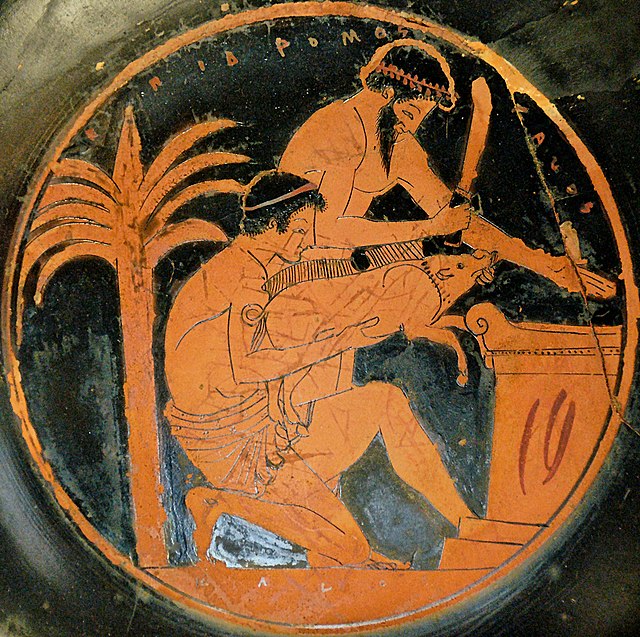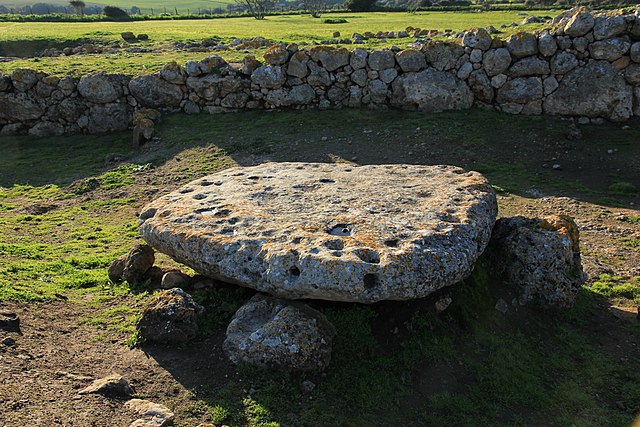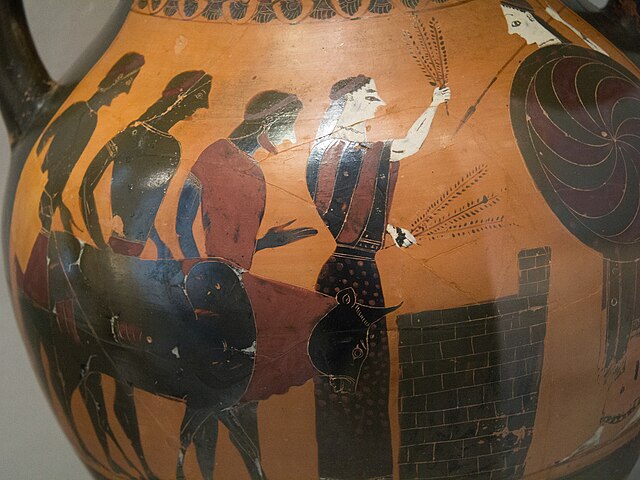Animal sacrifice is the ritual killing and offering of one or more animals, usually as part of a religious ritual or to appease or maintain favour with a deity. Animal sacrifices were common throughout Europe and the Ancient Near East until the spread of Christianity in Late Antiquity, and continue in some cultures or religions today. Human sacrifice, where it existed, was always much rarer.
Sacrifice of a pig in ancient Greece (tondo from an Attic red-figure cup, 510–500 BCE, by the Epidromos Painter, collections of the Louvre)
One of the altars at the Monte d'Accoddi in Sardinia, where animal sacrifice may have occurred.
A bull is led to the altar of Athena, whose image is at right. Vase, c. 545 BCE.
Sacrifice of a lamb on a Pitsa Panel, Corinth, 540–530 BCE
A holocaust is a religious animal sacrifice that is completely consumed by fire, also known as a burnt offering. The word derives from the ancient Greek holokaustos, the form of sacrifice in which the victim was reduced to ash, as distinguished from an animal sacrifice that resulted in a communal meal.
Burnt offerings at the Jade Palace (玉皇宮), a Taoist temple in Kaohsiung, Taiwan
Sacrifice of a pig to Demeter (tondo from an Attic red-figure kylix, ca. 510–500 BC
The Altar of Incense, Altar of Burnt-Offering, and Laver from the biblical Tabernacle; illustration from the 1890 Holman Bible







